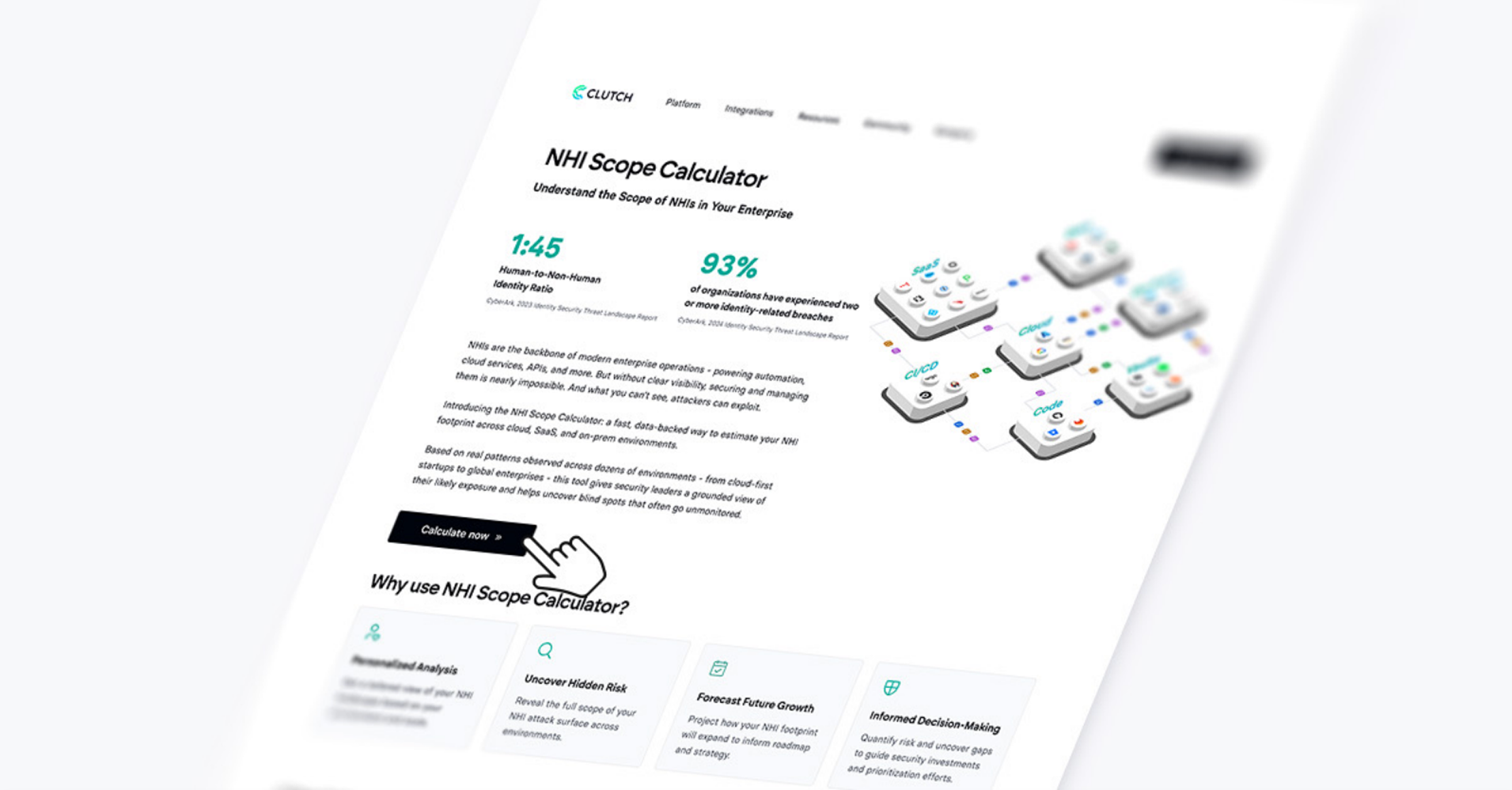Secret rotation has long been considered a fundamental security best practice. Organizations routinely cycle passwords, API keys, and other sensitive credentials under the assumption that frequent changes reduce risk. However, this approach is flawed.
At Clutch Security, we challenge the traditional reliance on rotation. Rather than addressing the root causes of secret management risks, rotation adds operational complexity while providing minimal security benefits. A more effective strategy prioritizes continuous validation and trust-based access controls over arbitrary credential changes.
The principle of debunking rotations is central to our approach and product strategy - empowering enterprise security teams with a more resilient, identity-first security model.

The Problem with Rotation
The premise behind rotation is straightforward: frequently changing credentials limits an attacker’s window of opportunity. In practice, however, this approach has significant shortcomings:
1. Rotation is Operationally Burdensome and Prone to Error
Managing secret rotation requires extensive automation, enforcement, and oversight, yet it does not eliminate the risk of compromise.
- Frequent changes introduce misconfigurations and downtime.
- Security teams often rely on others (engineering and DevOps) for rotations.
- Developers and security teams struggle to keep up with rotating secrets, leading to workarounds like hardcoding or caching credentials - ironically increasing risk.
- Despite the effort, rotation doesn’t prevent leaks; it only reduces the impact in some cases.
2. Attackers Move Faster Than Your Rotation Cycle
Even if a credential rotates every 90 days, 60 days, 30 days, or even 24 hours (which, as mentioned, may create an operational burden) that’s still enough time for an attacker to exploit it.
Secrets are often compromised within seconds - through exposed code repositories, logs, misconfigured storage, and other attack vectors. If the initial compromise goes undetected, scheduled rotation provides little protection. Once an attacker has access, rotating credentials won’t undo the damage.
This isn’t just a theory. In our latest research debunking the rotation illusion, we examined how quickly leaked NHIs are exploited to assess the effectiveness of secret rotation. We deliberately leaked AWS access keys across multiple platforms and scenarios to observe how quickly malicious actors would discover and act on them.
Key Findings:
Rapid Exploitation: Many secrets were exploited within minutes - one in as little as 40 seconds(!) - proving that attackers use automated tools to scan for leaked credentials and act immediately.
Rotation Is Ineffective: Even when secrets were rotated hourly and re-leaked, new keys were exploited just as quickly. This confirms that attackers operate faster than typical rotation cycles, rendering rotation ineffective as a standalone defense.
Additionally, in the second phase of our experiment - focusing on SaaS and CI/CD vendors (full report coming soon!) - we analyzed these platforms’ logging and monitoring capabilities for non-privileged actions. Spoiler: These capabilities are severely lacking, making it difficult to detect unauthorized access.
These findings underscore the limitations of secret rotation as a security measure. Attackers exploit exposed secrets faster than organizations can rotate them, and the lack of comprehensive logging makes detection even harder.
3. Rotation Fails to Address the Root Cause of Exposure
Most security incidents don’t happen because secrets exist for too long - they happen because secrets are exposed in the first place.
- The primary risk lies in excessive privilege, a lack of visibility, and weak access controls.
- Rotation doesn’t prevent secrets from leaking; it only forces a periodic reset.
The belief that rotation inherently improves security is misguided. Instead of addressing exposure and misuse, it adds complexity without solving the core problem.
A Better Alternative: A Zero-Trust Approach
Rather than relying on rotation as a security crutch, organizations should adopt a Zero-Trust approach to Non-Human Identity security. This means shifting from reactive credential cycling to proactive access control, continuous validation, least privilege enforcement, and ephemeral identities.
The foundation of this approach is comprehensive visibility and monitoring. Security teams must have full visibility into all NHIs across the organization, including their context and usage patterns, to reduce blind spots. Once NHIs are discovered and inventoried, Zero-Trust mechanisms can be applied:
1. Context-Aware Access Controls
Instead of blindly rotating secrets, security teams must ensure that only legitimate entities can use them.
- Implement risk-based authentication: Dynamically adjust access based on contextual risk signals (e.g., location, behavior anomalies).
- Use behavior analytics: Continuously monitor NHIs for unexpected access patterns that may indicate compromise.
- Enforce least privilege policies: Restrict NHIs to only the permissions required for their function, reducing lateral movement risk.
2. Short-Lived, Ephemeral Credentials
Rather than rotating static secrets, eliminate them where possible. Static credentials introduce persistent attack surfaces. Instead, transition to short-lived, dynamically issued credentials that limit an attacker's window of opportunity.
- Adopt federated identity models (e.g., AWS IAM roles, Azure Managed Identities, and GCP Workload Identity Federation). Try Federator, our open-source tool for automating cloud federation setup.
- Leverage ephemeral tokens: Use OAuth 2.0 or OpenID Connect (OIDC) to authenticate workloads securely.
- Ensure API keys and service accounts have expiration dates: Regularly audit and remove unused NHIs.
Learn how to transition to Secretless Cloud IAM in our NHI Index.
Moving Beyond Legacy Practices
At Clutch Security, we believe security should address root causes, not just symptoms. Secret rotation is not a solution - it’s a distraction. The focus must shift to identity-first security models that enforce trust, minimize exposure, and prevent unauthorized access at the source.
Organizations that continue to rely on rotation as a primary security measure are not mitigating risk; they are maintaining a false sense of security. A more effective approach demands the adoption of Zero Trust controls: continuous access verification, least privilege enforcement, and short-lived credentials.
It’s time to move beyond outdated security practices and adopt a model built for today’s threats. Ready to take the next step? Let’s talk





